HP HPE6-A79 Aruba Certified Mobility Expert Written Exam Exam Practice Test
Aruba Certified Mobility Expert Written Exam Questions and Answers
A company with 535 users deploys an Aruba solution with more than 1000 Aruba APs, two 7220 Mobility Controllers, and a single Mobility Master (MM) virtual appliance at the campus server farm. The MCs run a HA Fast failover group in dual mode and operate at 50% AP capacity.
If there is an MM or MC failure, the network administrator must ensure that the network is fully manageable and the MC load does not exceed 80%.
What can the network administrator do to meet these requirements?
Refer to the exhibit.

A network administrator completes the initial configuration dialog of the Mobility Controllers (MCs) and they join the Mobility Master (MM) for the first time. After the MM-MC association process, network administrator only creates AP groups, VAPs, and roles. Next, the network administrator proceeds with the configuration of the policies and creates the policy shown in the exhibit.
Which additional steps must be done to make sure this configuration takes effect over the contractor users?
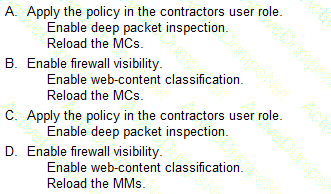
Refer to the exhibit.

A network administrator has Mobility Master (MM) - Mobility Controller (MC) based network and has fully integrated the MCs with ClearPass for RADIUS-based AAA services. The administrator is testing different ways to run user role derivation.
Based on the show command output, what method has the administrator use for assigning the “corp” role to client with MAC xx:xx:xx:xx:xx:xx?
An organization owns a fully functional multi-controller Aruba network with a Virtual Mobility Master (VMM) in VLAN20. They have asked a network consultant to deploy a redundant MM on a different server. The solution must offer the lowest convergence time and require no human interaction in case of failure.
The servers host other virtual machines and are connected to different switches that implement ACLs to protect them. The organization grants the network consultant access to the servers only, and appoints a network administrator to assist with the deployment.
What must the network administrator do so the network consultant can successfully deploy the solution? (Choose two.)
A network administrator assists with the migration of a WLAN from a third-party vendor to Aruba in different locations throughout the country. In order to manage the solution from a central point, the network administrator decides to deploy redundant Mobility Masters (MMs) in a datacenter that are reachable through the Internet.
Since not all locations own public IP addresses, the security team is not able to configure strict firewall polices at the datacenter without disrupting some MM to Mobility Controller (MC) communications. They are also concerned about exposing the MMs to unauthorized inbound connection attempts.
What should the network administrator do to ensure the solution is functional and secure?
Refer to the exhibits.
Exhibit 1

Exhibit 2
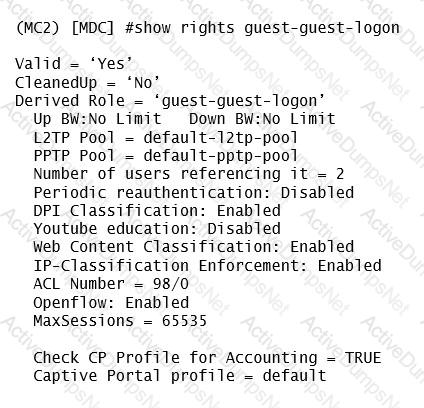
Exhibit 3
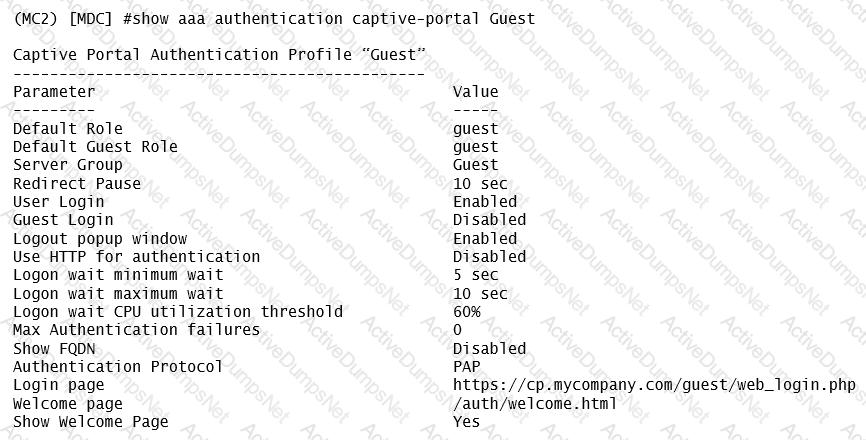
Exhibit 4
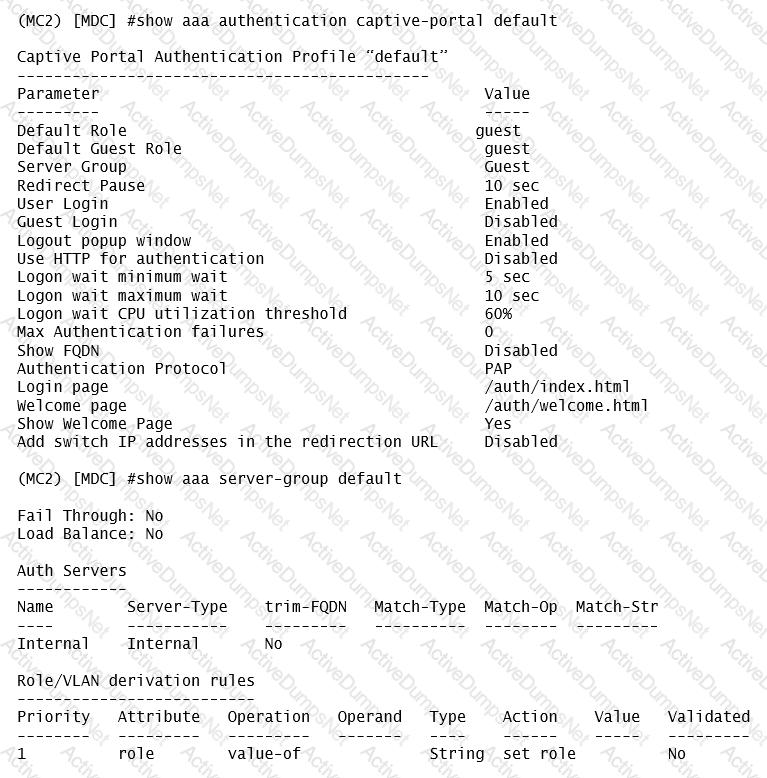
A captive portal-based solution is deployed in a Mobility Master (MM) - Mobility Controller (MC) network. A wireless station connects to the network and attempts the authentication process. The outputs are shown in the exhibits.
Which names correlate with the authentication and captive portal servers?
A joint venture between two companies results in a fully functional WLAN Aruba solution. The network administrator uses the following script to integrate the WLAN solution with two radius servers, radius1 and radius2.
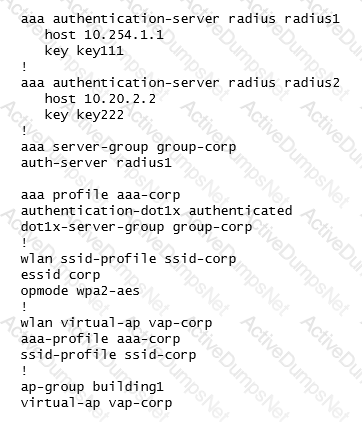
While all users authenticate with username@domainname.com type of credentials, radius1 has user accounts with the domain name portion.
Which additional configuration is required to authenticate corp1.com users with radius1 and corp2 users with radius2?
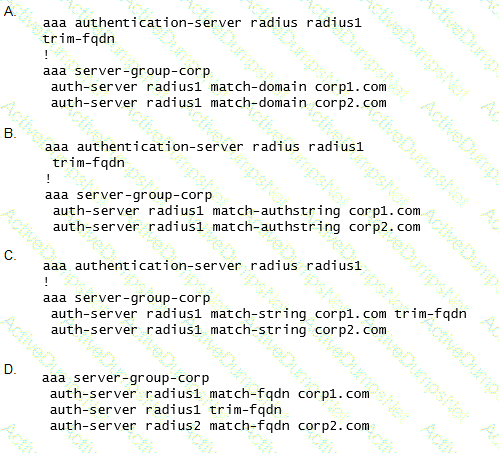
Refer to the exhibit.
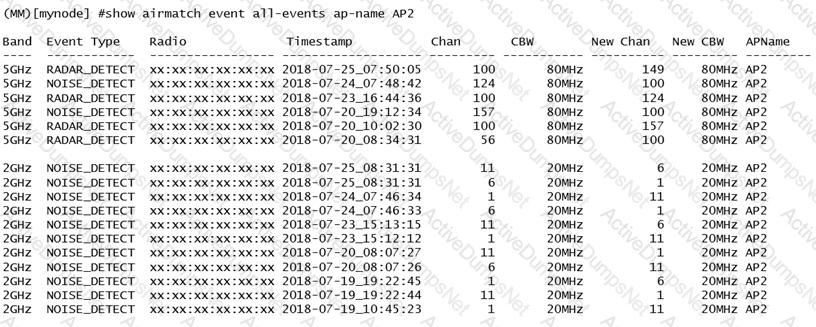
A network administrator deploys a Mobility Master (MM) - Mobility Controller (MC) network with Aps in different locations. Users in one of the locations report that the WiFi network works fine for several hours, and then they are suddenly disconnected. This symptom may happen at any time, up to three times every day, and lasts no more than two minutes.
After some research, the network administrator logs into the MM and reviews the output shown in the exhibit.
Based on this information, what is the most likely reason users get disconnected?
